These good guys and antiheroes have earned their spots among the classics…
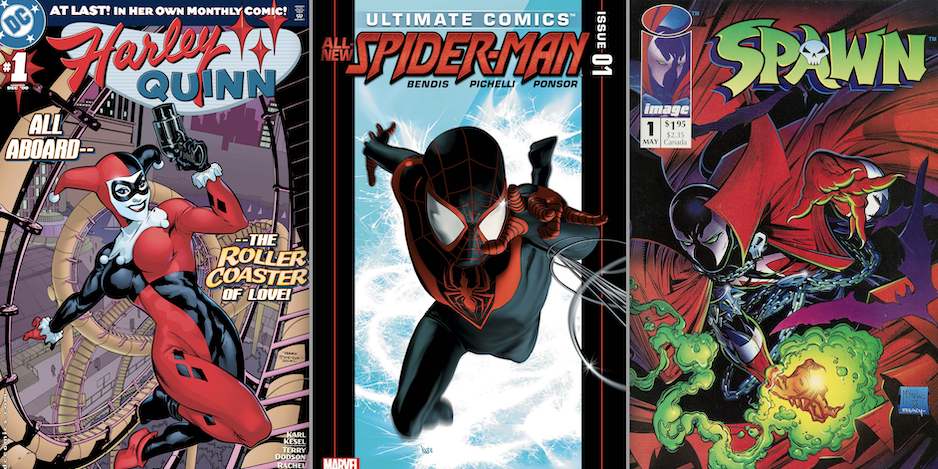
By SCOTT TIPTON, with CHRIS RYALL
In a recent installment of RETRO HOT PICKS, 13th Dimension Big Kahuna Dan Greenfield mused aloud that Venom must be one of the “oh, three or four biggest additions to comics in the Modern Age, behind Harley Quinn and (possibly) Deadpool.” Never one to shrink from a challenge, I’ve accepted Dan’s offer to curate a list of the 13 biggest such creations, all of whom debuted after 1986.
Naturally, my first call was to my longtime partner-in-crime (and fellow 13th Dimension correspondent) Chris Ryall, and between the two of us, and after many back-and-forth rounds of voting, we arrived upon our rankings. Your mileage may vary.
—
OUR METHOD
When deciding who makes the cut, we considered a few factors:
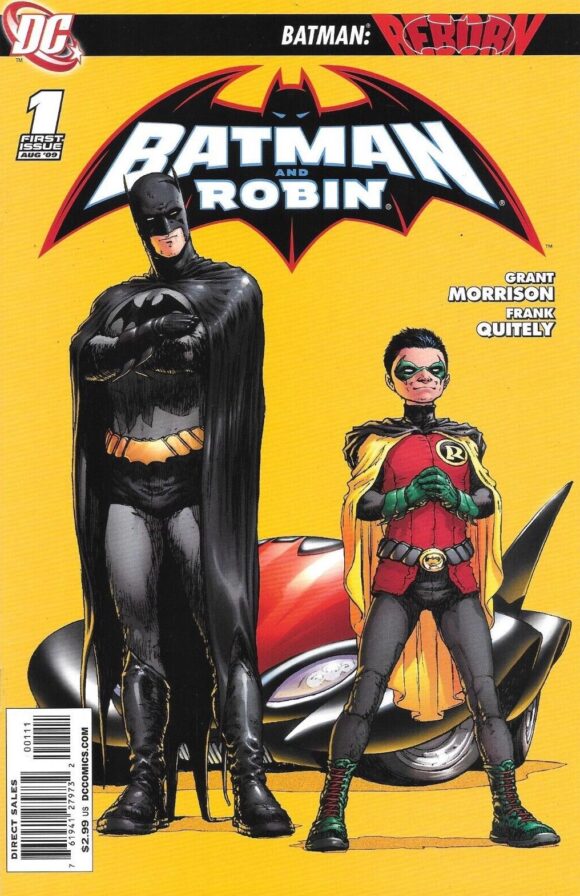
— Popularity. Did the character have their own series? Has it continued steadily? Are there always comics with said character being released? Do they frequently guest-star in other series or appear on teams?
— Originality. Is it an all-new character and not just an updated version of an earlier creation?
— Exposure. Has the character made an impact on pop culture outside of the printed page? Are there television series, movies, merchandise?
— Beyond Fandom. This one was the most subjective, I’ll admit, but basically: “Would my Dad have recognized the character on sight?”
—
Let’s get to it. But first, a few HONORABLE MENTIONS who almost made the cut (even though crusty Dan frowns on them):
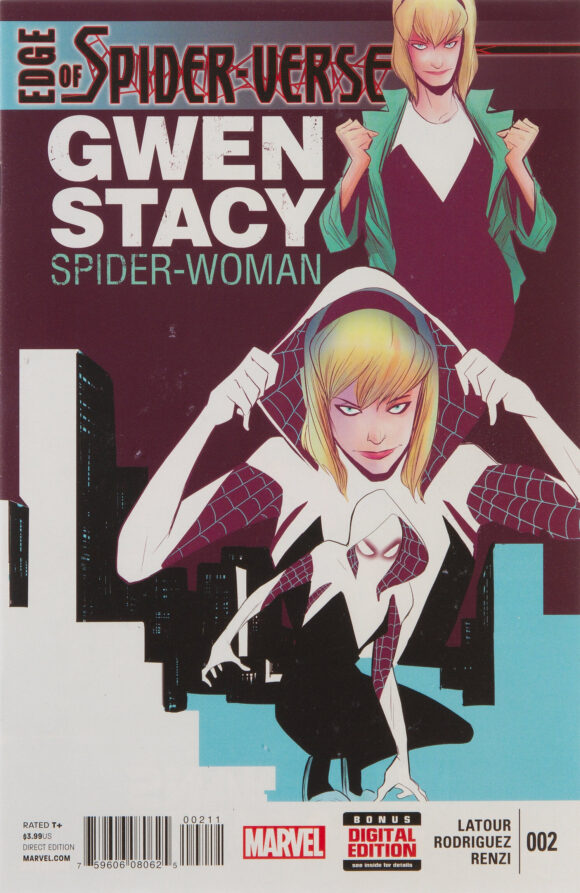
— The Winter Soldier. A definite first-round pick on the face of it, but for me, the most important and tragic thing about the Winter Soldier is that he’s Bucky Barnes, and since Joe Simon and Jack Kirby created him back in 1941, he’s off the list.
— Tim Drake and Damian Wayne. As popular as they are, they’re still essentially just Robin, so we couldn’t really justify calling them “new characters.”
— Spider-Gwen. Similarly, there’s just not enough new in the recipe here, as much as just a reshuffling of various Spidey-related characters and tropes.
— Jack Knight. I really wanted to include Jack here, not only because I love the character, but because of his overall impact on the DC Comics of his era (which we’ll discuss further in one of our selections below). But since his story ended so satisfactorily and he’s since been left alone, it felt like the test of time ruled him out.
On to our picks, with additional color commentary from Mr. Ryall:
—
13. Invincible. Robert Kirkman and Cory Walker’s teenage superboy is one of the longest-running Image superheroes, and his two seasons of animation on Amazon Prime has done a lot to catapult him into the public eye.

Chris Ryall: It’s especially impressive when you think how hard it is to create one series nowadays that resonates for comics fans and TV viewers alike, let alone two. Robert Kirkman now has this character stacking up nicely alongside Rick Grimes and the others who populate The Walking Dead.
—
12. Steel. The longest-running and best creation to spring from DC’s Death of Superman event, John Henry Irons proved to be much more than just a substitute Superman, but as Grant Morrison pointed out, he fills that “Iron Man” role at DC that the publisher never really had. Lots of animated and television appearances and a feature film (admittedly not a very good one) also helps secure his spot.
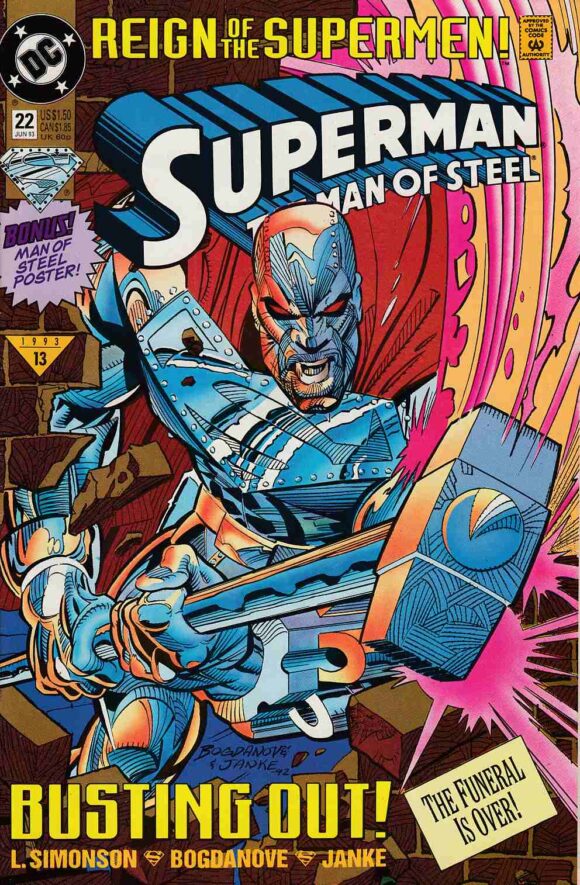
CR: I’d never really considered that before Grant pointed it out but it was indeed curious that DC never really had a prominent metal-suited character before. Unless you count Rocket Red.
—
11. Stargirl. Along with her immediate predecessor Jack Knight, Stargirl helped kick off the Justice Society renaissance that swept through DC in the late ’90s and early 2000s, returning the JSA to a prominence in comics second only to the Justice League. Numerous television and animated appearances, including her own live-action series (which was quite well done), have kept Courtney in the public eye.
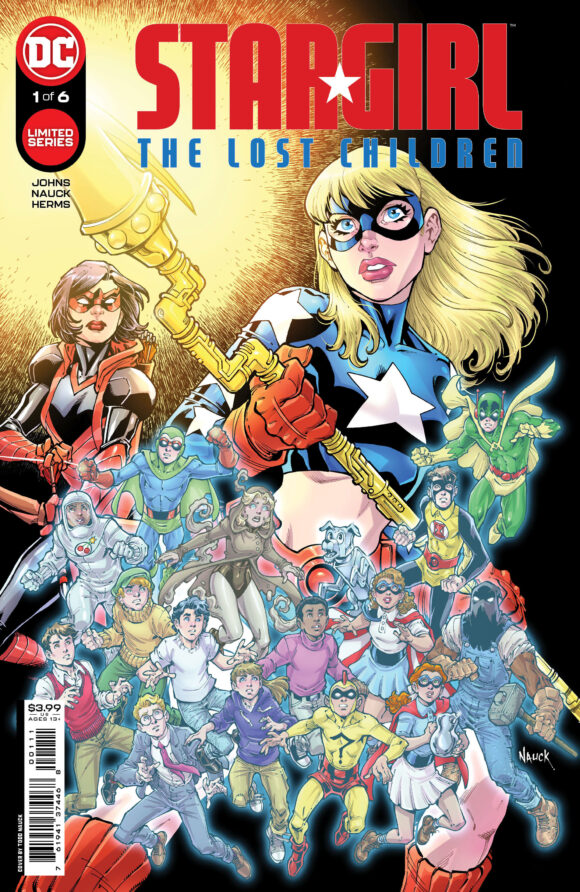
CR: Stargirl was also impressive for the fact that she never felt like a gender-swapped version of an existing character but instead, immediately resonated on her own, apart from the Knight family or any of the other Starmen that came before.
—
10. Jaime Reyes. Unlike the aforementioned Robins, the newest Blue Beetle is different enough from his predecessors that we consider him an original character. Alongside a high profile in the comics, the new Beetle has been a lead character in two long-running and critically acclaimed animated series (Batman: The Brave and the Bold and Young Justice), and recently headlined his own feature film. Jaime looks to be here to stay.
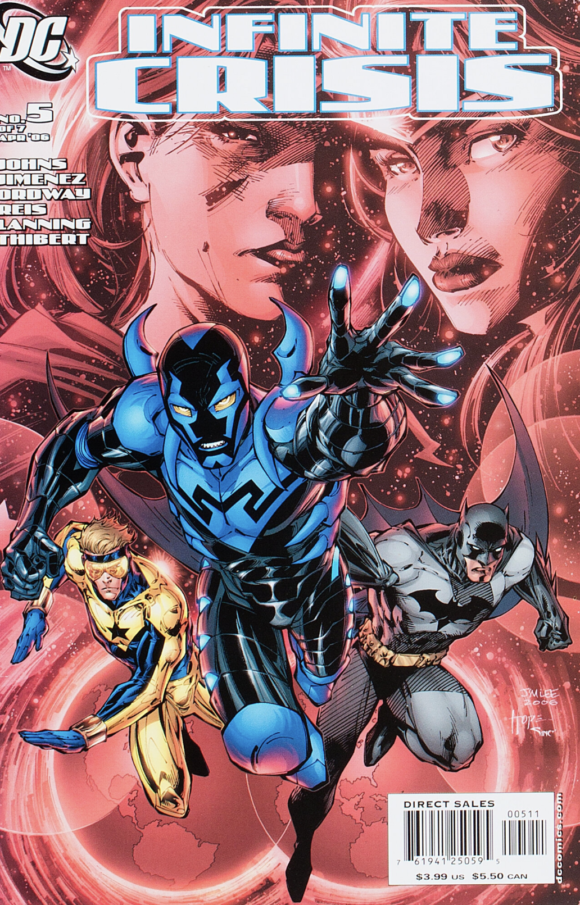
CR: Similar to Stargirl, the Jaime Reyes Blue Beetle feels demonstrably original, and has gone a long way toward removing the bad taste that the name “Blue Beetle” had for many of us after Ted Kord’s death.
—
9. Spawn. Todd McFarlane’s most famous creation has been a mainstay of comics since its creation in 1992, arguably Image Comics’ most famous character. Throw in a feature film, numerous animated series and films, and an action-figure empire, and there’s no arguing that Spawn belongs on this list, even if his comics importance has diminished in recent years.
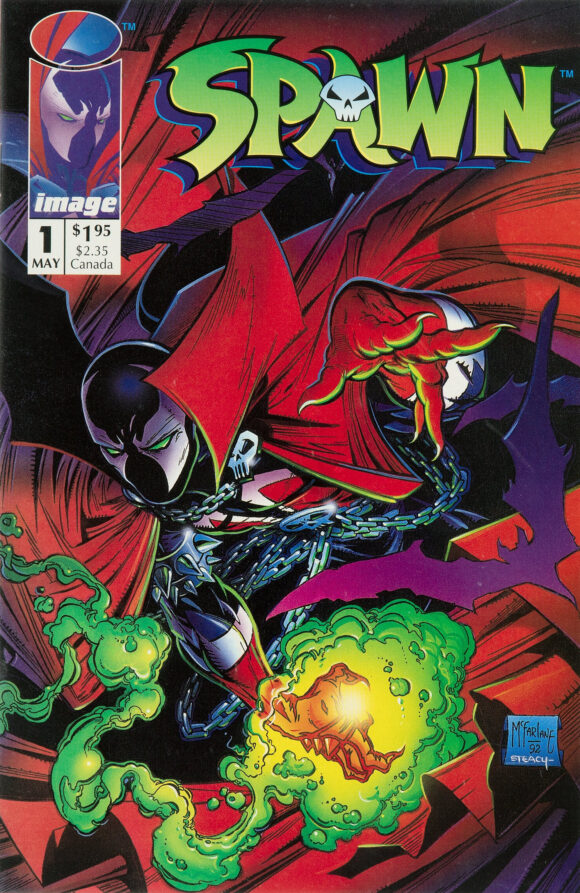
CR: Not to mention what is still probably the most impressive cape in comics, over 30 years running now.
—
8. Cable. Louise Simonson and Rob Liefeld’s time-traveling cyborg soldier took Marvel Comics by storm when he was introduced in the pages of The New Mutants in 1990. After the title transformed to X-Force not long following his arrival, it even eclipsed X-Men in popularity for a few years. Extra points for Josh Brolin’s portrayal in Deadpool 2 a couple years back.
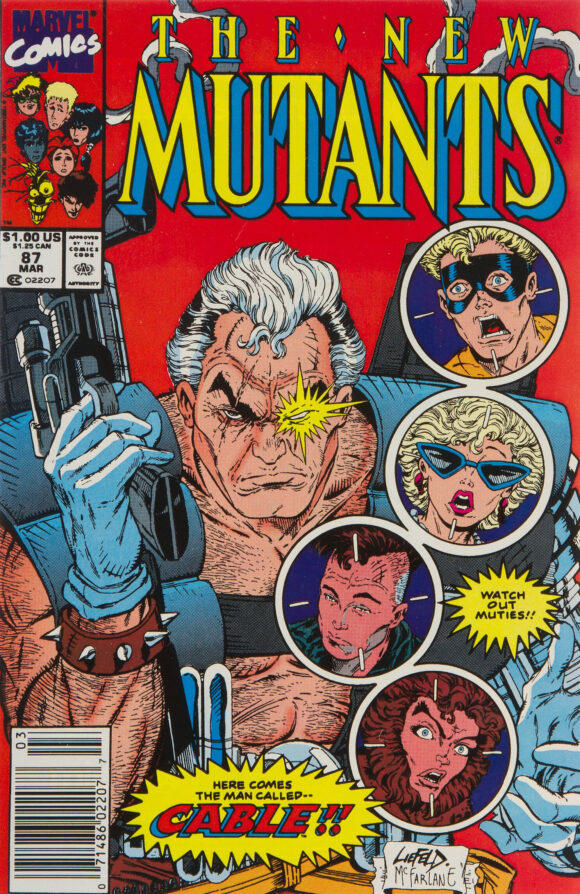
CR: There’s no denying the impact Cable had on the X-universe and on fandom, even if his arrival happened around the same time as my initial departure from being a regular reader of the X-Men titles. It all started to be too much to keep up with but I certainly appreciate the character and what he’s meant to that world. And he’s a blast in Deadpool 2.
—
7. Morpheus. Neil Gaiman’s The Sandman has had a greater effect on comics as an industry than almost anything else on this list, with the series of graphic novels becoming evergreen sellers for DC and cementing the Vertigo imprint as a kingmaker for decades. Its self-contained nature prevented the character from being a greater influence on DC Comics continuity, although the recent Netflix series gave him much more widespread exposure.
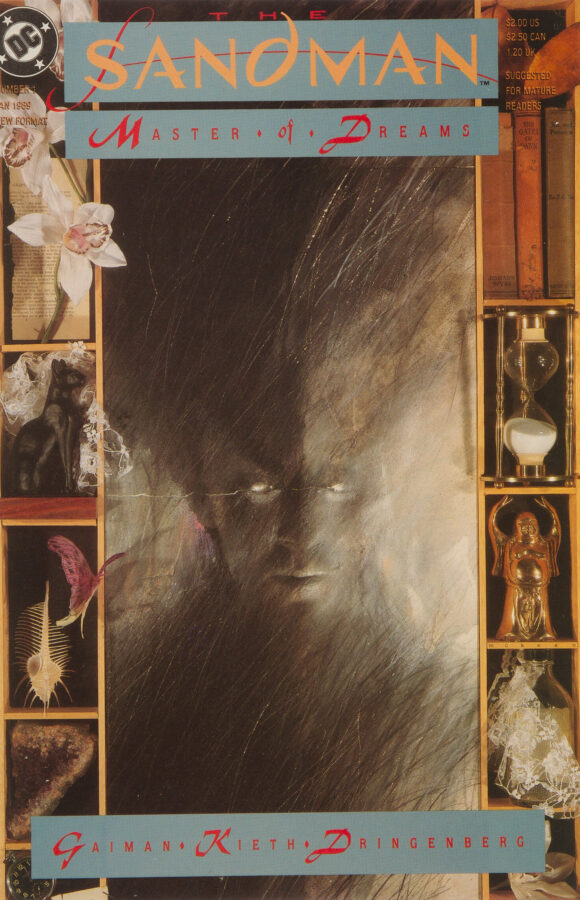
CR: I think there was a massive “rising tide” kind of swell after Sandman. Not only did the series help keep around fading comics fans, bored with the industry’s many excesses in the early ’90s, but it also went a long way toward building Vertigo, bringing in new comics readers, and kickstarting an entire literary fantasy element that had been missing from comics at the time.
—
6. Hellboy. Mike Mignola’s demonic monster hunter, one of the pillars of publisher Dark Horse, has not only been a consistently popular presence on bookshelves, but with three feature films (two of them great), a passel of animated movies, and barrels of merchandise, has also carved out an undeniable chunk of the landscape.
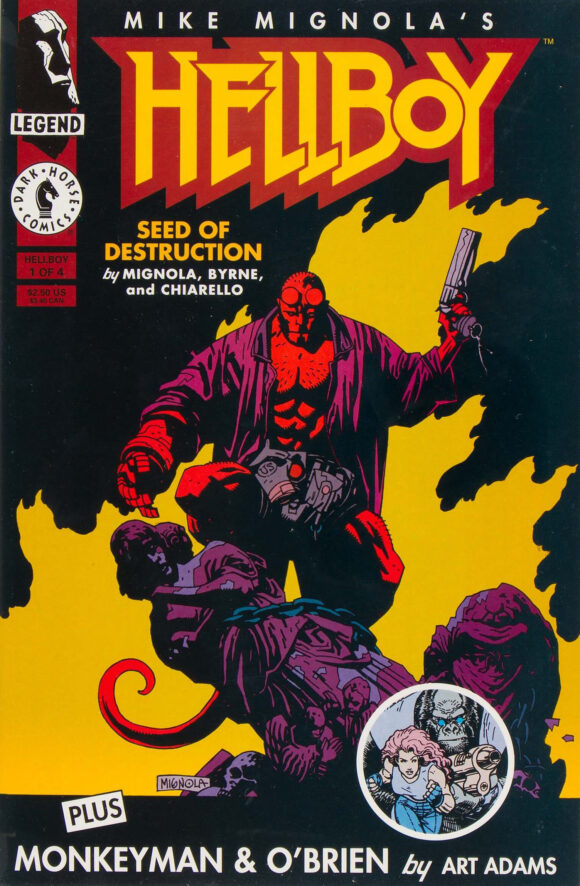
CR: Hellboy is in many ways like the AC/DC of the comic industry—distinctive and cool right from the start, and utterly immune to, or willfully defiant of, changing approaches in the broader comics industry. The spinoff titles, movies, animated works, toys, and merch all speak to his wide appeal but most impressive of all is the way the character and his world are so rooted in Mignola’s original intent, never wavering or losing its way.
—
5. Kamala Khan. The new Ms. Marvel (similar to her predecessor in name only) burst onto the scene in 2014, and was an immediate hit, thanks to its positive outlook, fresh perspective in its teenage Muslim female leading character, and the immensely likeable and relatable personality of neophyte hero Kamala Khan. Kamala quickly made the jump to superhero teams like the Champions and the Avengers, and before long was frequently appearing in TV animation and all kinds of merchandise, as well as live-action TV and the movies.
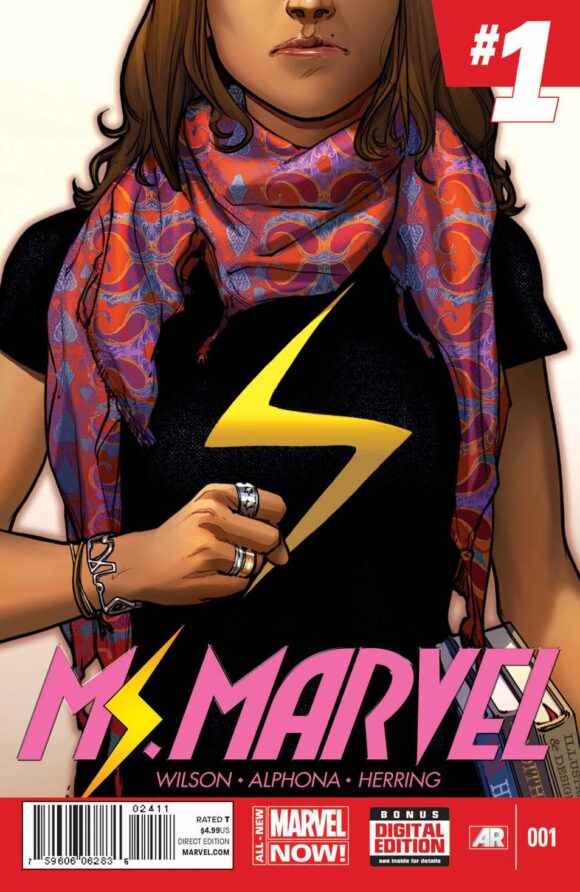
CR: One of those characters and worlds that was immediately likable right out of the gate, and also a hero who has gone a long way toward bringing in new readers. Ms. Marvel also showed Marvel and other publishers that younger-skewing comics could reach a broad audience far beyond the intended readership if the stories and art are compelling to any age.
—
4. Miles Morales. Created by Brian Michael Bendis and Sara Pichelli, the new Ultimate Spider-Man surprised readers after the shocking death of Ultimate-Universe Peter Parker in 2011, and before long became one of Marvel’s most popular characters. The Academy-Award-winning film Into the Spider-Verse catapulted Miles into mainstream popularity, along with tons of merchandise and the current and quite popular video game.
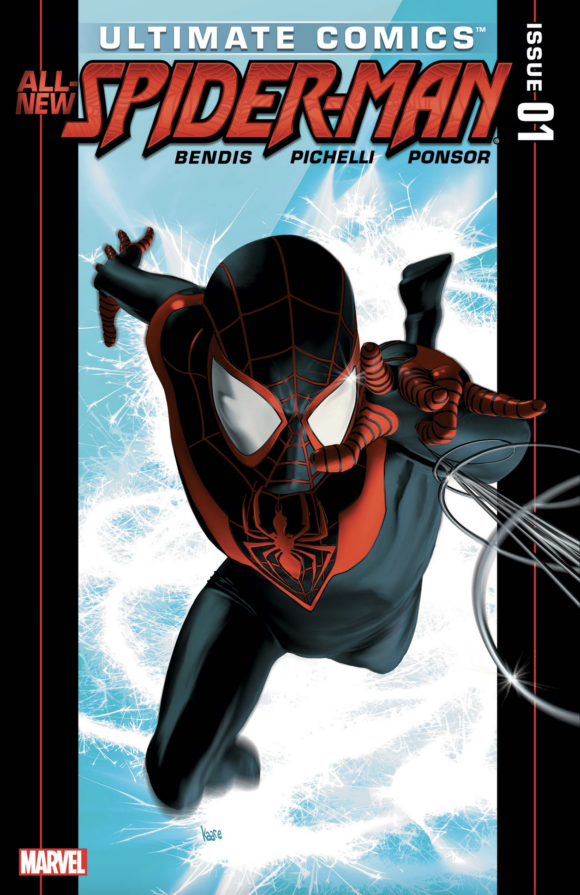
CR: Miles was a character who felt strongly defined from his first appearance, and he also felt more important than his relative sideline as the Spider-Man of the Ultimate Universe. Which Marvel recognized by bringing him into the MU proper, where he is now every bit as much of the 616 universe’s Spider-Man as Peter Parker. I’ll admit I miss a bit of Miles the inexperienced high-school student with powers, since he was quickly aged up to more normal superhero status, but at any age, he’s been an appealing and welcome addition to the comics landscape.
Dan adds: I’m only chiming in here once: In the RETRO HOT PICKS column noted above, I mentioned the three characters below, but I think a very strong argument could be made that Miles belongs higher on this list, probably as high as No. 2.
—
3. Venom. Everyone’s favorite alien symbiote first appeared in 1988 courtesy of The Amazing Spider-Man creative team of David Michelinie and Todd McFarlane, extrapolating from the tale of the alien costume brought back from outer space by Spidey during Secret Wars. Before long, Venom became Marvel’s most popular antihero, and over the years has stayed in the spotlight and crossed over to animation and film, including two live-action movies of his very own.
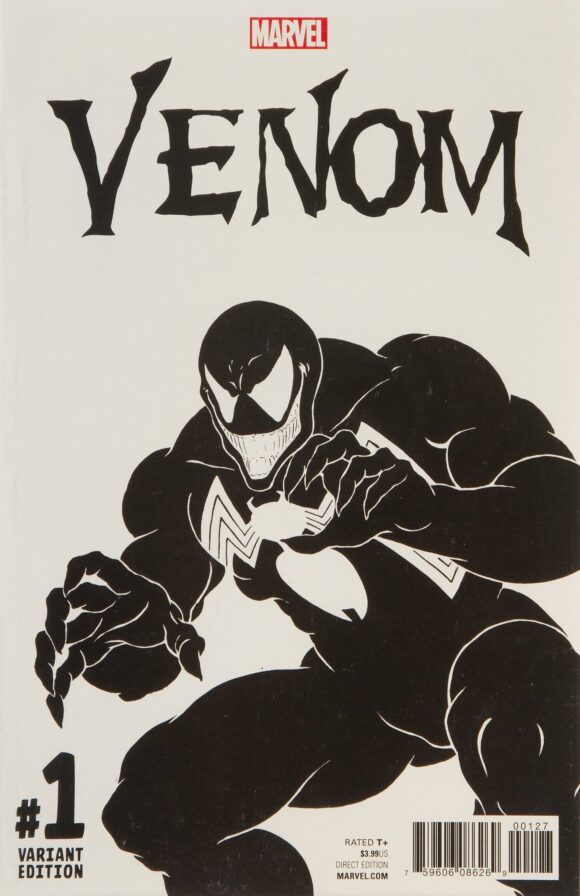
CR: Venom certainly has his fans.
—
2. Deadpool. Deadpool is everywhere these days, in large part thanks to Ryan Reynolds’ unforgettable and hilarious portrayal of the character all over the place, from film to commercials to awards-show acceptance speeches. But the character had made a huge impact on comics even before his movie-star days, from his first appearance in The New Mutants, all the way back in 1991, to his fourth-wall-breaking solo series, which cemented Wade Wilson as a fan favorite.
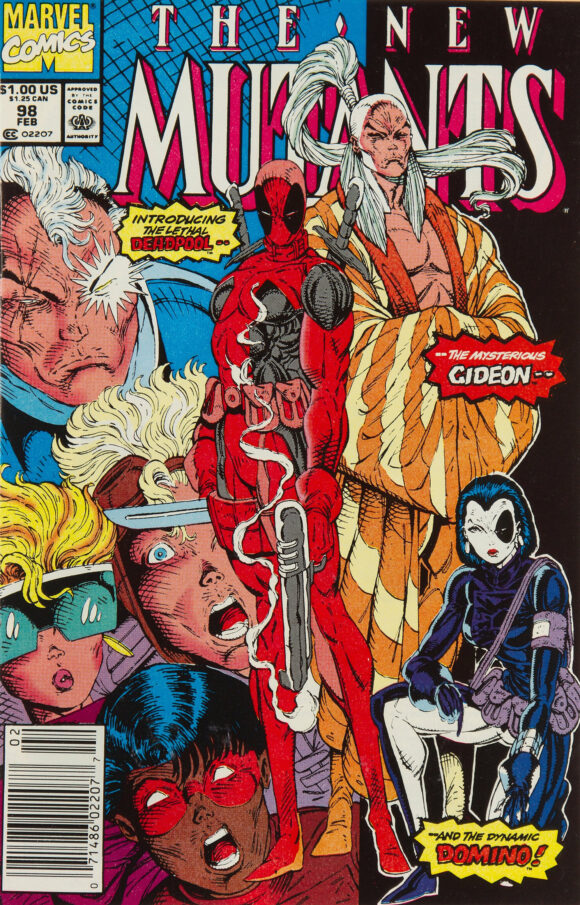
CR: He was a fun, dynamic character from the start but it was the issue of Deadpool’s original run, when the character met 1960s-era Spider-Man, where he really worked for me. Once he became a kind of ultra-violent Ambush Bug for the Marvel Universe, breaking the fourth wall and mocking the sillier aspects of comics (like Harry Osborn’s hair in Deadpool #11), I was fully on board. And since then, much like the character in the top spot here, Deadpool has worked as a completely ridiculous wiseass; as a serious, violent character; and as a tragic character whose story has been filled with real pathos along the way. Not every character can bear up under such wide tonal shifts, but Wade has managed that well. As has…
—
1. Harley Quinn. It’s gotta be Harley for the top spot, right? Debuting in Batman: The Animated Series in 1992, Paul Dini and Bruce Timm’s creation made the jump to comics, and quickly became one of DC’s most popular antiheroes in the pages of her own comic. Starring roles in three feature films; her own critically acclaimed and hilarious animated series; Hot Topic stores in every shopping mall full of Harley merch; and countless Harley cosplayers at every convention around the globe: It’s Harley Quinn’s world, and we’re all just living in it.
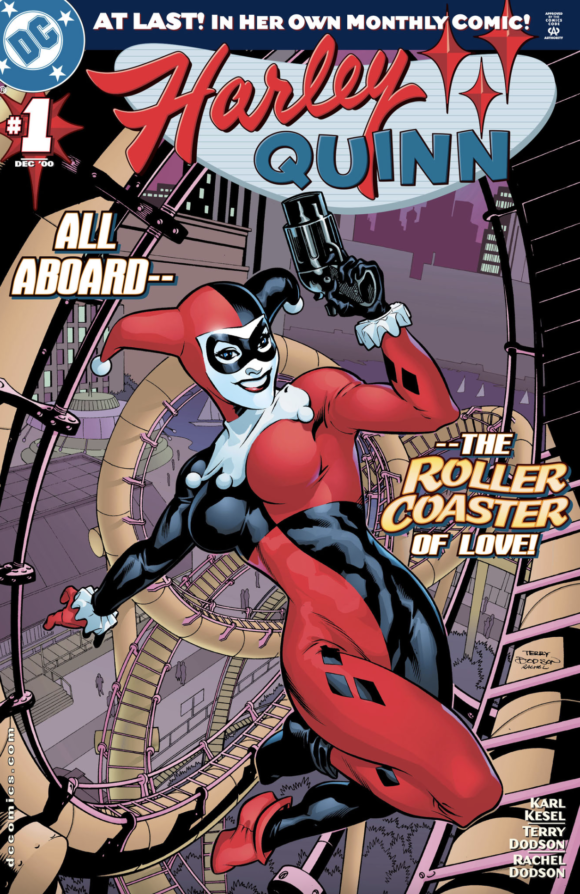
CR: Not much more I need to add to that. I just appreciate that the character has moved so far beyond her initial reliance on the Joker, and how so many different stories work well with Harley at the center.
—
MORE
— DC Does Not Consider HARLEY QUINN to be a BATMAN Book. Click here.
— A Veteran Animator Appraises INTO THE SPIDER-VERSE. Click here.
—
Scott Tipton is 13th Dimension’s longest-tenured contributor-at-large. He’s best known as the writer of scores of Star Trek comics published by IDW.
Chris Ryall is the co-owner/publisher of Image Comics imprint Syzygy Publishing. His latest series is Tales of Syzpense, out now. Subscribe to his Substack of the same name!

January 23, 2024
Extremely happy Harley Quinn is #1.
January 23, 2024
Personally, I don’t think any other comes close. She’s a franchise.
January 23, 2024
How do you disqualify Damian Wayne but include Miles Morales? He’s just another Spider-Man as much as Damian is just another Robin.
January 25, 2024
I have been trying so hard to think of any other characters that could fit in to this list. I did notice that they are exclusively of the super-hero set (even Morpheus has direct ties to the mainstream DC Universe that have been reiterated over and over again). I am a little surprised Bane wasn’t on the list, even as an honorable mention. Ditto with Batwoman (Kate Kane) and Batman Beyond (Terry McGuinness), who like Miles or Jaime are totally unique characters from their namesakes. Also, no Scott Pilgrim?!
There are a few others I’m sure you considered, but rejected because they don’t have the mass-market notoriety. Characters like Booster Gold, Cerebus, Death, The Goon, Hitman, Kevin Keller, Madman, Quantum and Woody, Savage Dragon, or Tim Hunter (the proto-Harry Potter). All have been amazing additions to the world of comics, but haven’t had external fame (yet). Was Lucifer considered a derivative character since he is based on the biblical character, or did he just not have enough clout to end up on the list?
Three “a-ha” characters turned out to not fit the parameters: The Teenage Mutant Ninja Turtles and Usagi Yojimbo were both created in ’84, and John Constantine was in ’85. I’d argue that none are really Bronze Age creations and didn’t gain notoriety until after ’86. But the rules are the rules.
I also was curious about comics – not specific characters – that fit the criteria. I was thinking of books like 300, Bone, The Boys, Maus, Milestone Comics (Static!?, Icon, Hardware, etc.), Preacher, Sin City, The Suicide Squad (the current iteration has no real connection to the original created in the ’60s beyond the name), The Walking Dead, or Watchmen(!?!?). I would think all of these comics have had mainstream appeal, just not with a specific character headlining. DMZ, Paper Girls, Sweet Tooth, and Y: The Last Man all had TV series, but regrettably still haven’t had massive cultural impact.
There are also a few properties that I think are just as important to comics, but again haven’t had the wider exposure. Books like 100 Bullets, Astro City, Kabuki, Strangers in Paradise, The Authority (who I posit are a direct progenitor of The Boys), Fables, Powers, or Saga. I hope that changes for them, as they are all amazing properties that deserve to be recognized.
Anyway, what a fun exercise to distract me from work on this rainy Thursday morning.
January 25, 2024
Booster Gold, or is he considered Bronze Age?
January 25, 2024
For me, did the character exist before Crisis or after? If before than I consider it Bronze Age. Anything Frank Miller or Watchmen is post in my book.
January 26, 2024
He’s right on the cusp. He first appeared while Crisis was being published. An argument could be made either way, I think.